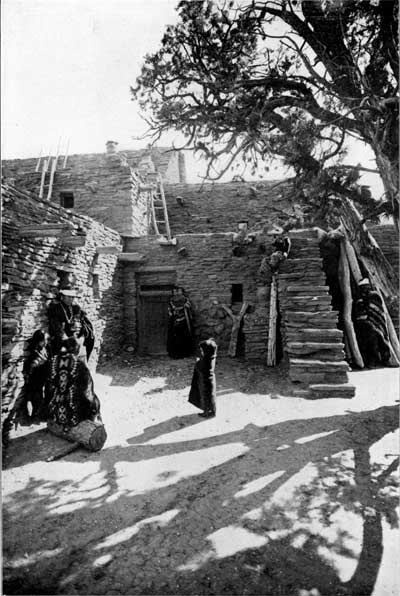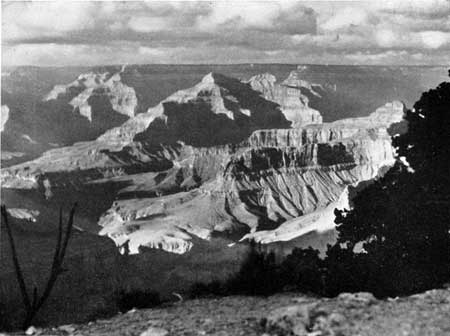.gif)
MENU
| National Parks Portfolio |

|
Grand Canyon

HOPI HOUSE AT EL TOVAR, REPRODUCED FROM AN ANCIENT HOPI COMMUNITY DWELLING
Copyright by Fred Harvey

WHEN CLOUDS AND CANYON MEET AND MERGE
Photograph by Fred Harvey
MASTERPIECE OF EROSION
THE rain falling in the plowed field forms rivulets in the furrows. The rivulets unite in a muddy torrent in the roadside gutter. With succeeding showers the gutter wears an ever-deepening channel in the soft soil. With the passing season the gutter becomes a gully. Here and there, in places, its banks undermine and fall in. Here and there the rivulets from the field wear tiny tributary gullies. Between the breaks in the banks and the tributaries irregular masses of earth remain standing, sometimes resembling mimic cliffs, sometimes washed and worn into mimic peaks and spires.
Such roadside erosion is familiar to us all. A hundred times we have idly noted the fantastic water-carved walls and minaretted slopes of these ditches. But seldom, perhaps, have we realized that the muddy roadside ditch and the world-famous Grand Canyon of the Colorado are, from nature's standoint, identical; that they differ only in soil and size.
The arid States of our great Southwest constitute an enormous plateau or table-land from four to eight thousand feet above sea level.
Rivers gather into a few desert water systems. The largest of these is that which, in its lower courses, has, in unnumbered ages, worn the mighty chasm of the Colorado.
Continued >>>
 Top
Top
Last Modified: Mon, Oct 31, 2002 10:00:00 pm PDT
http://www.cr.nps.gov/history/online_books/portfolio/portfolio9g.htm
![]()
